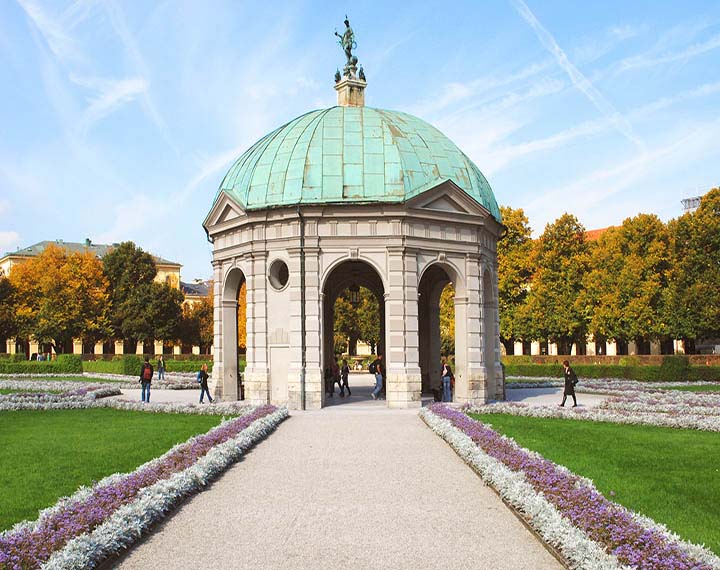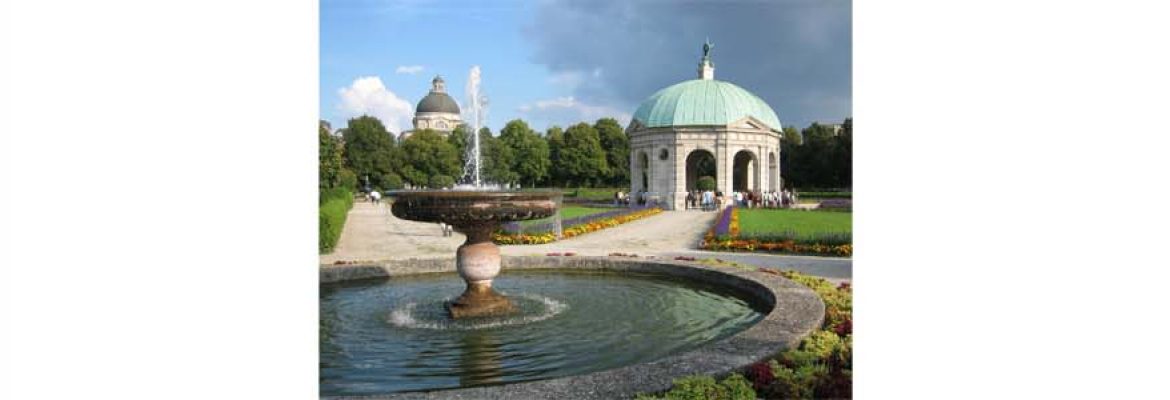Lush green space with meadows & formal flowerbeds, plus a pond, bandstand & Henry Moore sculpture. The green lung in the middle of the densely built-up city. Because of its diversity, the Hofgarten is a popular destination for a relaxing walk. The park owes its diversity to the different views on horticulture that can be read in its parts.
Storm Ela caused severe damage in the Hofgarten on Whit Monday, June 9, 2014. Formative elements such as the Reitallee, the Lindenrondell and the Maximilian-Weyhe-Allee were completely devastated. A total of around 370 old trees were destroyed by storm Ela.
The reconstruction of the historic park will take several years. The planning for a restoration of the historic park – in line with monuments, nature and the big city – has already been tackled.
Rebuilding after the storm
First replanting in the courtyard garden. The courtyard garden received 125 new trees in spring 2016, as well as numerous shrubs and perennials. In total, plants have been planted for half a million euros. That is an enormous sum and if you walk through the courtyard garden, you will see new, fresh greenery in many places. The park is alive again.
Along the Oederallee and the Inselstraße, the wooded flanks destroyed by the storm were renewed. It was particularly important to build up a wind-stable plant community. The formerly dense stands of trees served as a space-defining backdrop. Taking into account the remaining old stocks, these were supplemented with tree species suitable for the future. The planners took into account newly created visual relationships. Today there are views into and out of the park that did not exist when the Hofgarten was created. The creator of the facility, Maximilian F. Weyhe and all subsequent garden architects, have always placed the park in relation to the urban environment. It is therefore only logical to enable a view of the Tonhalle, Ehrenhof or other important urban ensembles today,
Along the sighing alley, the row of trees that had become gapped could be closed again with 15 new trees. In addition, a magnolia (Magnolia sulangiana) was replaced on the Goltstein parterre. It initially flowers in a Below the Napoleonsberg, many solitary trees have been replaced. Sweet chestnuts (Castanea sativa), hop beech (ostrya carpinifolia), sweetgum trees (Liquidambar styraciflua) and trumpet trees (Catalpa bibnonioides) were planted, among other things.
The quarter north of the beech grove, which was almost completely destroyed in the storm, was laid out in a very distinctive grid planting. This planting goes back to the design by Maximilian Weyhe. The few remaining trees were integrated, red maple (Acer rubrum) chestnut (Castanea sativa) were newly planted
 Hofgarten
Hofgarten

